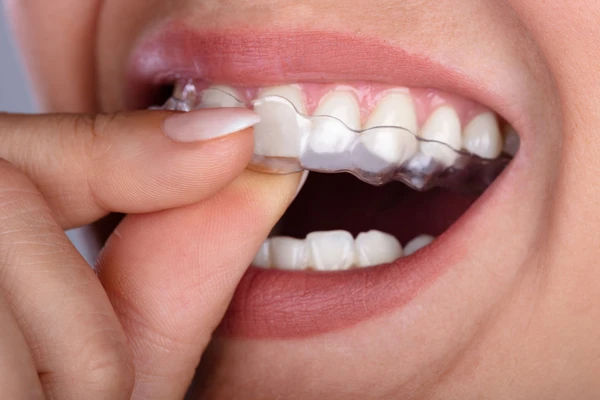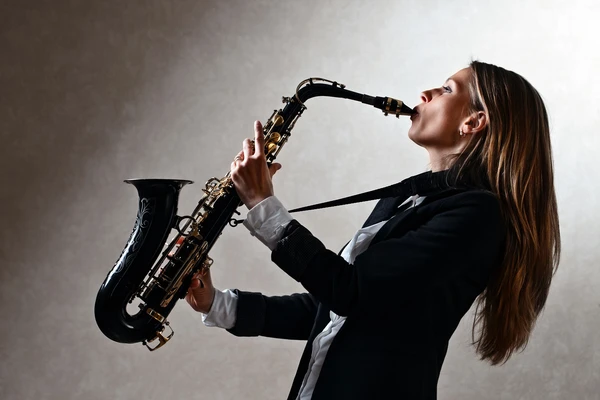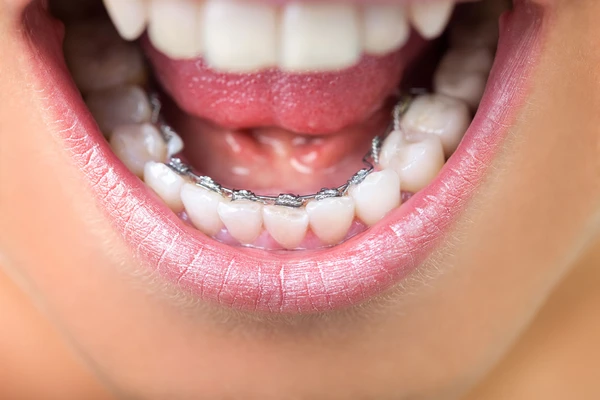Dr. Sebastian Krause
| Mo: 08:30 - 20:00 Uhr |
| Di: 08:30 - 19:00 Uhr |
| Mi: 08:30 - 19:00 Uhr |
| Do: 08:30 - 19:00 Uhr |
| Fr: 08:30 - 19:00 Uhr |
Alle Termine nach Vereinbarung
Kostenlose Parkplätze stehen unseren Patienten im Parkhaus unter der Praxis zur Verfügung.
Zahnspange für Musiker
Für den guten Ton – kieferorthopädische Behandlungen für Musiker
Gerade Zähne zaubern Menschen nicht nur ein schönes Lächeln ins Gesicht, sondern bringen auch auf gesundheitlicher Ebene viele Vorteile mit sich. Zähne, die in einer Reihe angeordnet sind, sorgen für ein gesünderes Zahnfleisch und vereinfachen die Zahnpflege um ein Vielfaches. Wir von Dr. Krause & Kollegen, Ihrer Fachzahnarztpraxis für Kieferorthopädie München, verhelfen Ihnen oder Ihrem Kind gerne zu Ihrem Traumlächeln.
Sie spielen ein Blasinstrument und fragen sich, ob Sie für eine kieferorthopädische Behandlung geeignet sind? Unsere Antwort: Ja, denn Blasinstrumente können auch mit einer speziellen Zahnspange für Musiker gespielt werden.
Musiker, die ein Blasinstrument spielen, bei welchem das Mundstück im Mundvorhof platziert wird, können von der Technik einer innenliegenden unsichtbare Zahnspange profitieren. Denn bei der Lingualtechnik werden die Brackets nicht im Mundvorhof angebracht, weshalb sie beim Musizieren nicht stören. Zu Beginn einer kieferorthopädischen Therapie in Ihrer Fachzahnarztpraxis für Kieferorthopädie München kann es zu einer Umstellungsphase kommen, bis Sie oder Ihr Kind sich an die festsitzende, innenliegende Musiker-Zahnspange gewöhnt haben. Viele Musizierende berichten, dass es zu Beginn ihrer kieferorthopädischen Behandlung zu einer Veränderung des Ansatzverhaltens führen kann, was sich mit der Zeit jedoch wieder legt.
Musiker können bei kleinen Zahnfehlstellungskorrekturen zudem auf sogenannte Aligner von bspw. Invisalign® in München zurückgreifen. Die nahezu unsichtbaren Zahnschienen von Invisalign® München, die Sie von Ihrem Kieferorthopäde München Dr. Sebastian Krause erhalten, ermöglichen eine diskrete Korrektur der Zahnfehlstellung.
Sie möchten mehr über Zahnspangen für Musiker erfahren?
Gerne beantworten wir Ihre individuellen Fragen bezüglich Zahnspangen für Musiker in einem Erstberatungstermin in unserer Fachzahnarztpraxis für Kieferorthopädie München. Vereinbaren Sie einfach direkt einen Beratungstermin bei Ihrem Kieferorthopäden in München Dr. Sebastian Krause.
Wir freuen uns auf Sie!



Musical Instruments and braces Orthodontics for Musicians
Musical instruments with braces
Playing a wind instrument with braces can be very difficult. For many people the fear of losing the ability to play their instrument can be a real barrier to getting braces. In fact, some who are very serious about their music may even choose to not fix their teeth to avoid disrupting their music career.
The truth is those fears are not totally unfounded. A survey on high school bands published in the Journal of Clinical Orthodontics showed that almost all wind instrument players suffered difficulties with conventional braces. Most students said they had to re-establish their “embouchures”. This means, essentially they had to relearn how to play their instruments. The most common problem was impingement of the lips and cheeks between the mouthpiece and the braces. The worst affected were the brass instrument players, they had more difficulty than woodwind instrument players. Some players find that the inside of their lips become sore whilst practising or performing. Because the mouthpiece of a brass instrument is pressed against the lips, the transition can be difficult and the adjustment period can take up to 6 months when getting the braces on and removing them.
Solutions for playing a wind instrument with braces
The best solution to playing wind instruments with braces is to use lingual braces. Lingual braces are placed on the inside surface or the back surface of the teeth. There are no sharp braces or wires to impinge on the lips and cheeks.We have offered lingual braces to our teenage patients for many years and we have found it the only way they can carry on with their music with minimal if any disruption.
There are other remedies that are suggested by various companies. Most commonly the patients will be given wax to apply to the braces, however braces do still pierce through the wax. Another popular choice is a special silicon sleeve or guard, which can cover the braces. However this sleeve does require that teeth are already relatively straight, which can be months into the treatment.
Another option is to consider treatment with Invisalign®. We have great results with Invisalign®. It has the advantage that it can be removed for practice and playing music. However if the musician spends long hours practicing their instrument this may mean a longer treatment with Invisalign® than would be with lingual braces as they will be spending less time with the braces in place.
In addition Invisalign® is not the most suitable treatment for some bite issues. At the initial assessment, different treatment options will be discussed and the best appliance will be considered both to suit the patients lifestyle and deliver the best outcome for their teeth. In many cases we actually combine Lingual braces with Invisalign®.
What are lingual braces?
Lingual/Incognito braces are braces that are placed on the inside surface of the teeth so the braces are completely invisible. Lingual braces offer a 100% customisation with the same quality as conventional braces and treatment times being the same while also being completely invisible.The customised systems that we use are individually designed and manufactured for every patient to make the appliances as small and as comfortable as possible.
Invisalign® vs lingual braces
Invisalign® is a great option for children and teenagers as well. It offers many of the advantages we get with lingual braces with the added advantage of being able to remove the appliance for playing a wind instrument, cleaning and eating. The only limitation here, can be compliance, as it is the patient who drives the treatment with Invisalign® and to achieve the desired outcomes. The aligners must be worn a minimum of 22 hrs/day. This requires dedication and compliance and some children and teenagers may not have the drive to comply with this. Additionally, some cases may be too complex for aligner treatment and so fixed appliances like braces can be offered for more control over the outcome.
Would you like to find out more about braces for musicians? We are happy to answer your individual questions about braces for musicians in an consultation at our dental practice for orthodontics in Munich. Simply arrange a consultation with your orthodontist Munich Dr. Sebastian Krause.
We are looking forward to meet you!